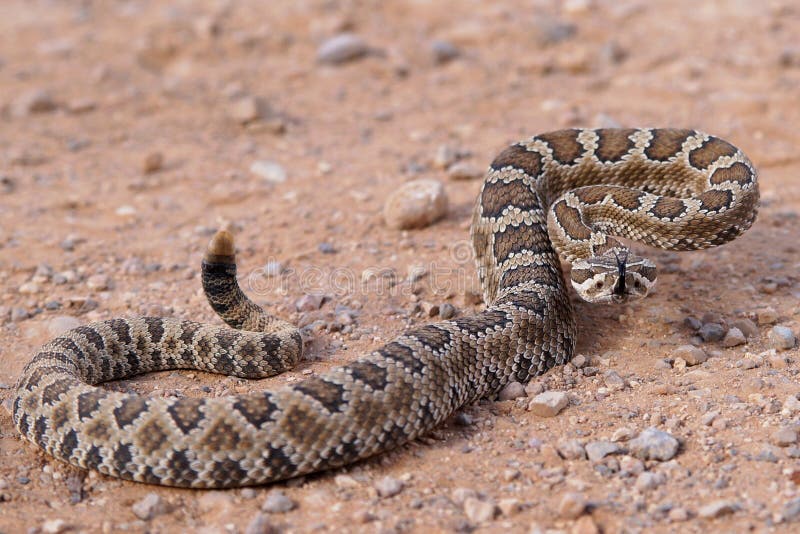
Great Basin Rattlesnake, Crotalus Oreganus Lutosus Stock Photo Image of reptile, rock 37541324
Southern Pacific rattlesnakes (Crotalus oreganus helleri) remain lighter in shades of colors such as tan and yellow as well as having dark brown patches on the body and a wide tail. Great Basin rattlesnakes ( Crotalus oreganus lutosus ) are thick-bodied and have tan coloring along with black patches on the dorsum.
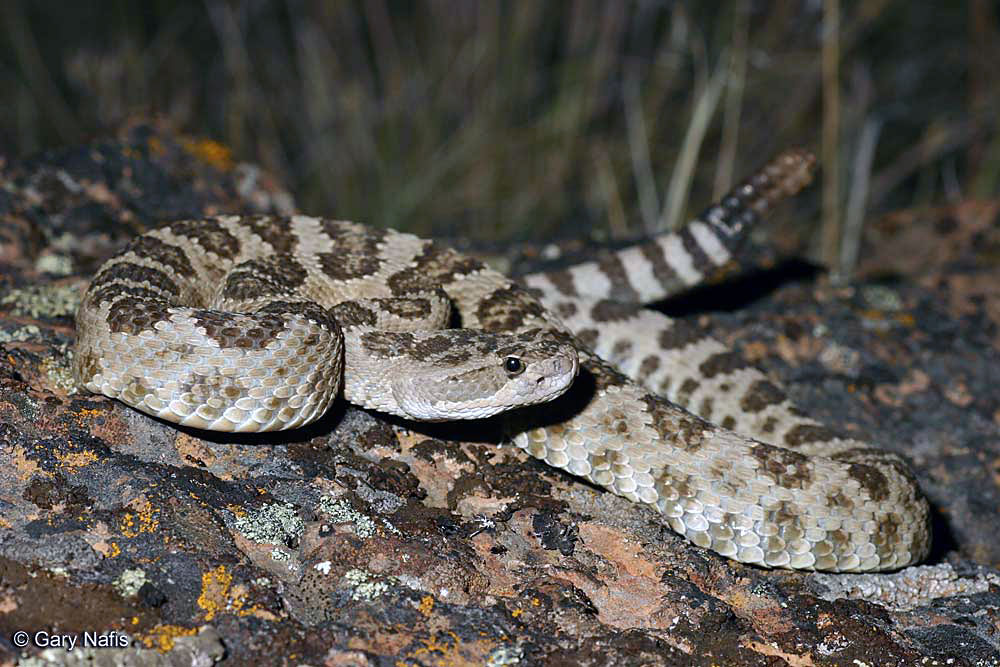
Great Basin Rattlesnake Crotalus oreganus lutosus
The Grand Canyon rattlesnake (C. oreganus abyssus) is a subspecies of the more broadly spread Western rattlesnake (Crotalus oreganus). Blending into Grand Canyon's varied rock layers, this venomous pit viper uses its rattle to warn predators off, the tiny muscles firing up to fifty times per second--some of the fastest known to science.

Great Basin Rattlesnake Crotalus oreganus lutosus
A variety of snake species employ head hiding as defensive behavior (Greene 1973. J. Herpetol. 7:143-161), but such behavior seems to be rarely observed in rattlesnakes. A recent report (Medica 2009. Herpetol. Rev. 40:95-97) presented observations on Crotalus scutulatus scutulatus and cited cases of similar behavior involving C. atrox, C. ruber, and C. viridis viridis.

Great Basin Klapperschlange (Crotalus oreganus lutosus), SE Oregon Stockfotografie Alamy
Crotalus lutosus — DAVIS et al. 2016. Crotalus oreganus lutosus — WESTEEN et al. 2023. Distribution. USA (Great Basin between the Rocky Mountains and the Sierra Nevada) Type locality: "10 miles northwest of Abraham on the road to Joy, Millard County, Utah. Altitude approximately 4650 ft." [= USA, elevation 1415 m].

Great basin rattlesnake (Crotalus oreganus lutosus) Flickr
Taxonomic database that provides basic information about all living reptile species, such as turtles, snakes, lizards, and crocodiles, as well as tuataras and amphisbaenians, but does not include dinosaurs.

Great Basin Rattlesnake Crotalus oreganus lutosus
1 Great Basin Rattlesnake (Crotalus oreganus lutosus) 2 The Great Basin Rattlesnake is considered a medium-sized, heavy-bodied venomous snake with a maximum length of 65 in. They have triangular-shaped heads and white facial stripes that extend from behind the eyes to the corner of the mouth.

Great Basin Rattlesnake (Crotalus oreganus lutosus) Rattlesnake, Snake venom, Pit viper
Although it is commonly believed that diamondbacks and timber rattlesnakes live in the Pacific Northwest, the only indigenous species in the region is the western rattlesnake ( Crotalus oreganus ). These wide-ranging reptiles are found in dry, rocky regions west of the Continental Divide, from Mexico to Canada.

Great Basin Rattlesnake Crotalus oreganus lutosus
Great Basin Rattlesnake - Crotalus oreganus lutosus California Page with More Pictures and Species Description Many of the Great Basin Rattlesnakes shown on this page were found in Nevada because I don't yet have pictures of the "pure" subspecies from Oregon, Washington, or Idaho.

Great Basin Rattlesnake (Crotalus oreganus lutosus) Flickr
Crotalus: Species: oreganus lutosus: Common Name: Great Basin Rattlesnake: Relatives in same Genus Eastern Diamondback Rattlesnake (C. adamanteus) Western Diamondback Rattlesnake (C. atrox) Sidewinder (C. cerastes) Baja California Rattlesnake (C. enyo) Timber Rattlesnake (C. horridus)
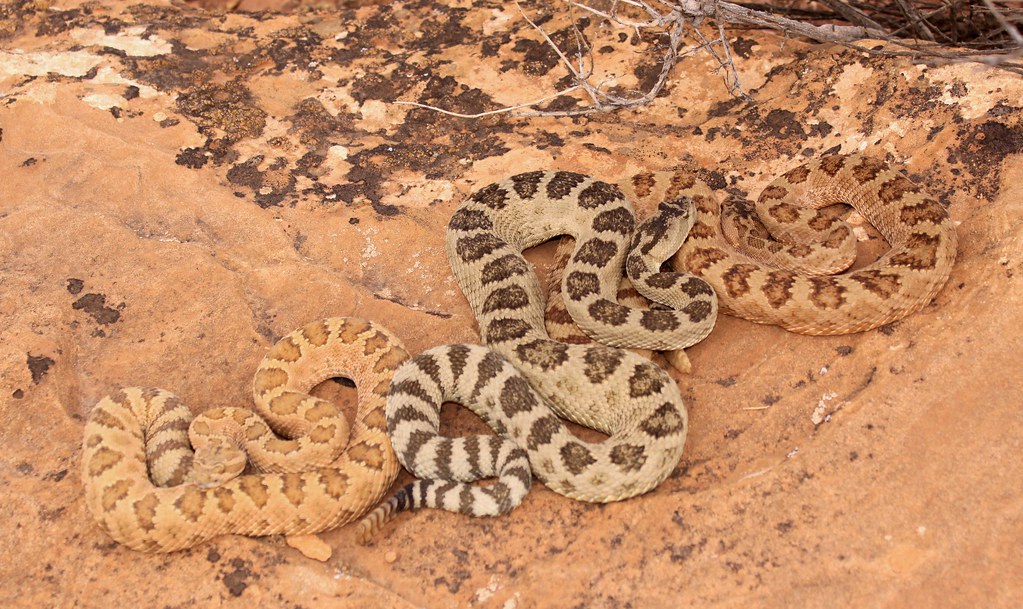
Great Basin Rattlesnakes (Crotalus oreganus lutosus) Flickr
SCIENTIFIC NAME Crotalus oreganus lutosus CLASSIFICATION Reptile LIFE SPAN 10-20 Years STATE CONSERVATION STATUS Unprotected FEDERAL CONSERVATION STATUS Least Concern GAME STATUS Non-Game Washoe Humboldt Pershing Churchill Mineral Lyon Douglas Carson City Storey Elko Lander Eureka White Pine Esmeralda Nye Lincoln Clark Habitat & Range
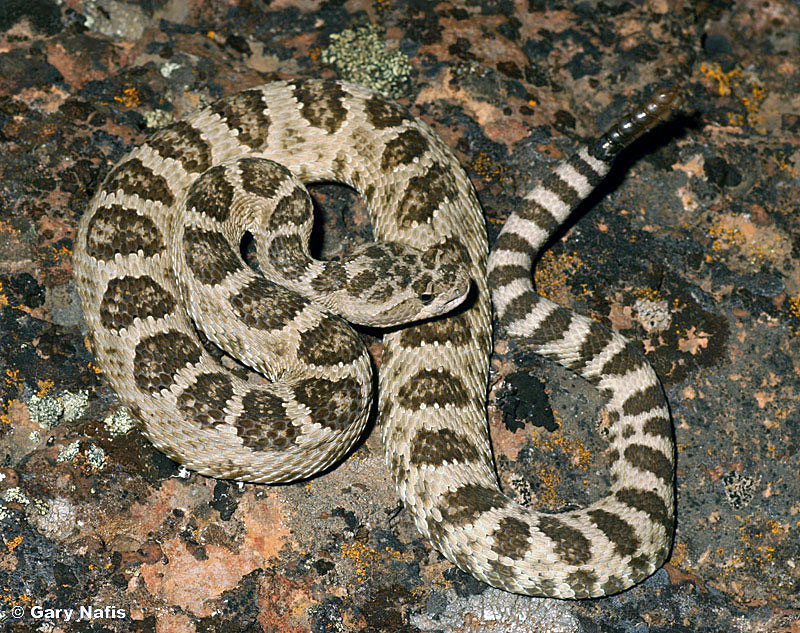
Great Basin Rattlesnake Crotalus oreganus lutosus
Crotalus oreganus lutosus - Great Basin Rattlesnake Range of other subspecies in California: Dark Blue: Crotalus oreganus helleri - Southern Pacific Rattlesnake Red : Crotalus oreganus oreganus - Northern Pacific Rattlesnake Gray: Intergrade Range Click on the map for a topographical view Map with California County Names California Rattlesnakes

Great Basin Rattlesnake (Crotalus oreganus lutosus) Flickr
Crotalus oreganus, commonly known as the Western rattlesnake or northern Pacific rattlesnake, [4] [5] is a venomous pit viper found in western North America from the Baja California Peninsula to the southern interior of British Columbia . Description The size of this varies greatly, with some populations being stunted and others growing very large.

Variability of the Great Basin Rattlesnake (Crotalus oreganus lutosus) Snake Buddies
This large rattlesnake can reach up to 48 inches in length and resides in many of the western states along the Great Basin in dry and barren habitats. It is distinctly blotched, typically with a banded tail before the rattle. Great Basin rattlesnakes occupy a variety of habitats, from arid flats, sagebrush thickets, rocky hillsides, grasslands.
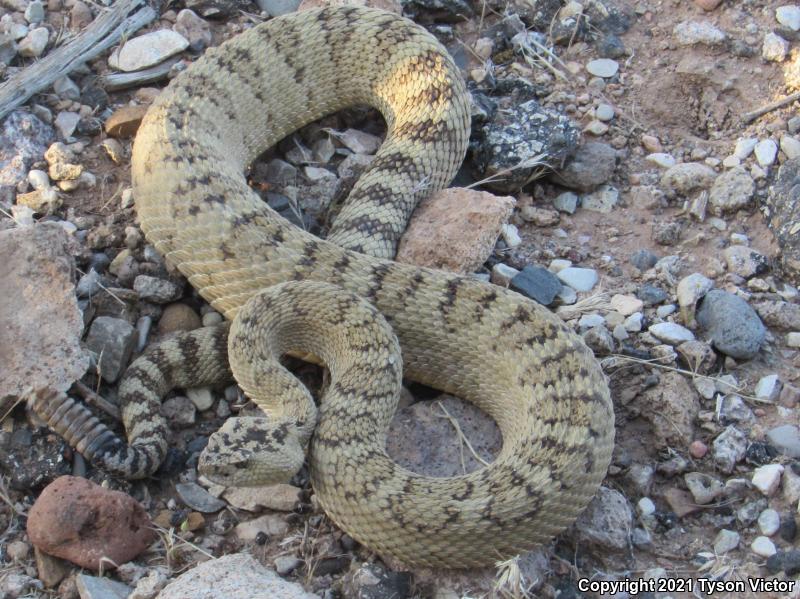
Great Basin Rattlesnake (Crotalus oreganus lutosus)
Crotalus oreganus lutosus — Great Basin Rattlesnake near Benton, Mono County, California — July 4, 2014 This rattlesnake was the only herp I saw in a few hours of nighttime road cruising across the desert expanses of Mono County.

Great Basin Rattlesnake (Crotalus oreganus lutosus) Flickr
The Great Basin rattlesnake (Crotalus lutosus) is a venomous pit viper species found in the United States.It was first formally named by Laurence Monroe Klauber in 1930 as a subspecies of Crotalus confluentus (now known as Crotalus viridis). The Great Basin rattlesnake is commonly considered a subspecies of the Western rattlesnake (Crotalus oreganus).
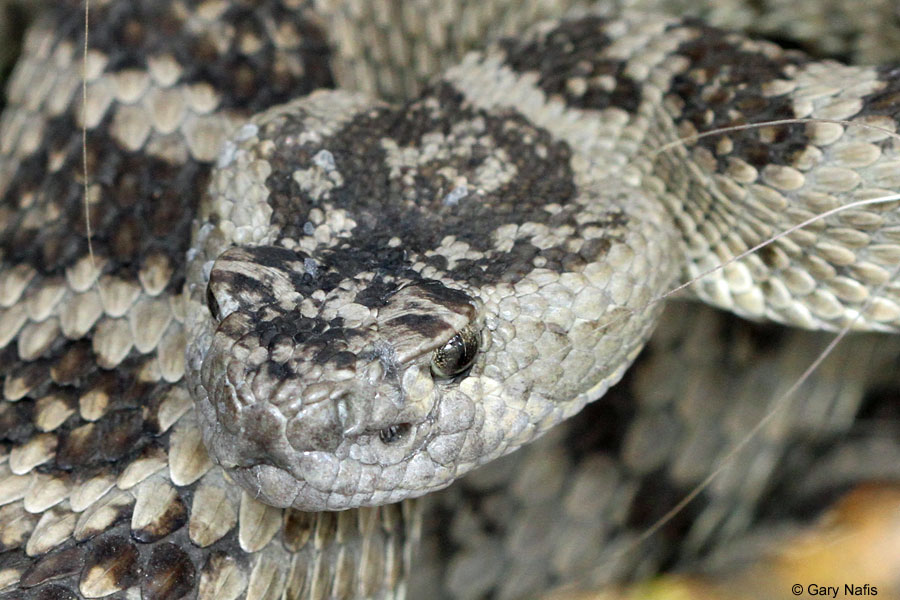
Great Basin Rattlesnake Crotalus oreganus lutosus
Crotalus oreganus lutosus. Identification Numbers. TSN: 683066. Geography. Launch Interactive Map. Working with others to conserve, protect and enhance fish, wildlife, plants and their habitats for the continuing benefit of the American people. Footer Menu - Employment. Careers & Internships;